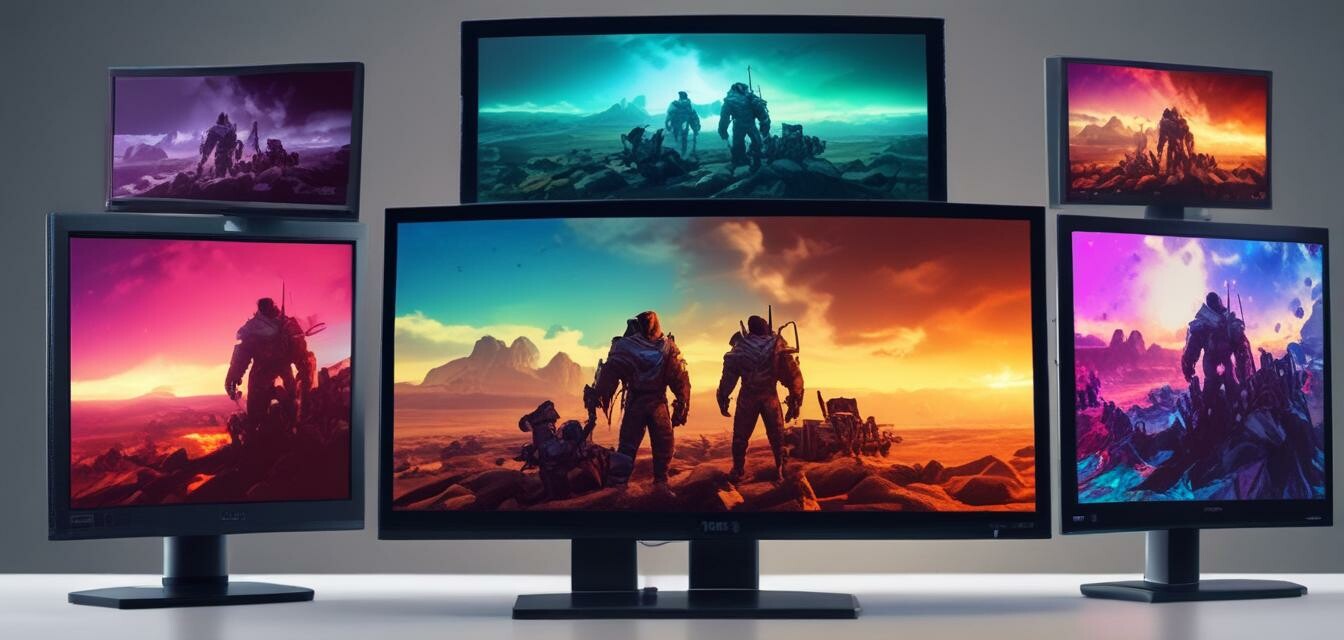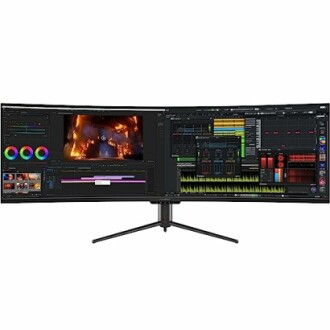
Key specifications to consider when buying a gaming monitor
Key Takeaways
- Refresh Rate: Higher is better for smooth gameplay.
- Resolution: Aim for at least 1080p for a quality experience.
- Response Time: Look for a low response time to minimize ghosting.
- Panel Type: Consider IPS for better color accuracy or TN for fast response.
- Connectivity: Ensure compatibility with your gaming devices.
Choosing the right gaming monitor is crucial for a good gaming experience. With so many options on the market, it can be overwhelming. This guide will simplify the process by breaking down the key specifications you need to consider, ensuring you select a monitor that enhances your gaming sessions.
Understanding the Key Specifications
1. Refresh Rate
The refresh rate, measured in hertz (Hz), indicates how many times per second the monitor updates what’s displayed. A higher refresh rate provides smoother gameplay, which may be crucial in fast-paced games.
| Refresh Rate (Hz) | Type of Gaming Experience |
|---|---|
| 60 | Basic gaming, suitable for casual games. |
| 144 | Great for competitive gaming. |
| 240+ | Ideal for high-end gaming enthusiasts. |
2. Resolution
Resolution refers to the number of pixels that make up the display. Higher resolution offers more detail and clarity. For gaming, the minimum acceptable resolution is 1080p (Full HD).
| Resolution | Typical Use |
|---|---|
| 1080p (FHD) | Most games and casual use. |
| 1440p (QHD) | Mid-range gaming with good quality. |
| 4K | High-end gaming and professional use. |
3. Response Time
The response time is how quickly a pixel can change from one color to another. Lower response times reduce motion blur during fast-paced action, which is vital in competitive gaming scenarios.
| Response Time (ms) | Effects |
|---|---|
| 1-3 | Minimal motion blur, ideal for gaming. |
| 4-5 | Acceptable for casual gaming. |
| 6+ | May experience noticeable blur. |
4. Panel Type
There are different types of display panels, each with its advantages and disadvantages:
- IPS: Best for color accuracy and viewing angles.
- TN: Faster response times but poorer color reproduction.
- VA: Best contrast ratio but can have slower response times.
5. Connectivity Options
Ensure your chosen monitor has the necessary ports to connect to your devices:
- HDMI: Essential for most gaming consoles and PCs.
- DisplayPort: Common for high-end gaming setups.
- USB-C: Useful for connecting modern laptops and devices.
Feature to Consider: Curve vs. Flat
Curved monitors can offer a more immersive experience as they match the natural curvature of the human eye. Flat monitors, however, tend to be less expensive and can still offer excellent performance.
INNOCN 49" Curved Gaming Monitor
An ultrawide monitor with a 32:9 aspect ratio, 144Hz refresh rate, and HDR technology designed for an immersive gaming experience.
Learn MoreConclusion
Finding a gaming monitor can be tough, but keeping these specifications in mind will help simplify your choice. Evaluate your gaming habits and select a monitor that aligns with your needs, whether you're a casual gamer or a competitive enthusiast.
Want to Know More?
Check out our detailed guides on various types of gaming TVs and monitors:

